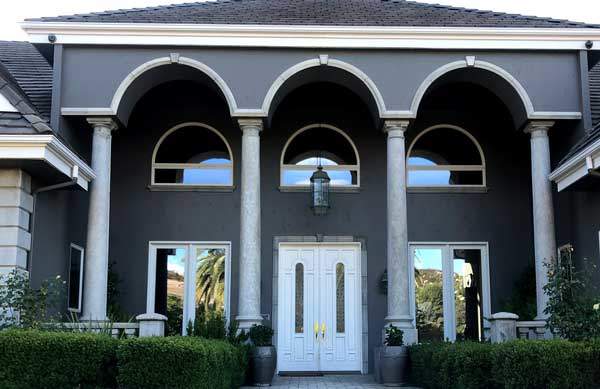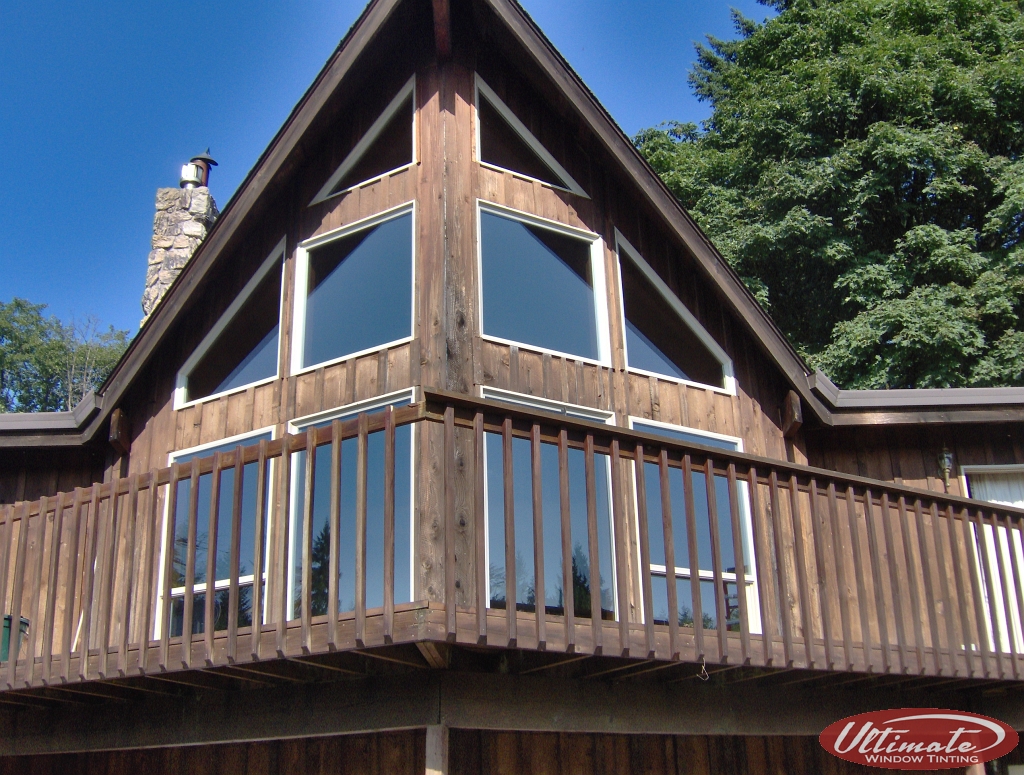Residential Window Tint for Huge Windows: Maintain Comfort and Style
Residential Window Tint for Huge Windows: Maintain Comfort and Style
Blog Article
Just How Residential Home Window Tinting Enhances Your Home's Power Performance
Residential home window tinting provides a compelling solution for homeowners seeking to enhance power performance within their living areas. By applying specialized films to home windows, it properly lowers heat transfer, therefore stabilizing interior temperatures and minimizing the requirement for excessive heating or air conditioning. This not only stops energy usage but likewise gives a much more comfy environment by alleviating glow. Nevertheless, recognizing the nuances of exactly how tinting works and choosing the appropriate type for your home can be critical. Strangely enough, what variables should one take into consideration before making this investment?
Recognizing Home Window Tinting
Recognizing home window tinting is crucial for property owners seeking to improve both comfort and energy efficiency in their space. Residential Window Tint. Window tinting involves the application of a thin film to the inside or outside surface area of glass home windows. This movie can substantially regulate the amount of sunlight and warm that enters a home, thus influencing interior environment conditions
There are different types of window tinting movies readily available, each with distinctive properties. Colored films absorb solar power, while reflective films deflect it away from the glass surface area. Ceramic movies provide a balance of visibility and heat denial, making them a prominent choice amongst home owners. The performance of window tinting is frequently measured by its Visible Light Transmission (VLT) percent, which indicates how much light can travel through the movie.
Benefits of Power Effectiveness
Home window tinting not only boosts aesthetic appeals but additionally plays a considerable function in improving power performance within property spaces. By minimizing heat transfer with home windows, tinted films produce an extra stable interior climate, which can lead to considerable decreases in energy usage for home heating and cooling. This power efficiency equates right into reduced energy bills, supplying homeowners with considerable lasting savings.

Furthermore, window tinting boosts the convenience of living spaces. By minimizing glow and blocking harmful UV rays, colored windows create an even more enjoyable environment, which can cause boosted well-being for residents. The defense against UV rays also aids protect furnishings and flooring from fading, adding to the durability of household products.
How Tinting Works
Tinting movies run with a mix of sophisticated products and innovations designed to regulate the amount of solar power going into a home. Largely composed of polyester, these movies commonly incorporate metal or ceramic bits that mirror and absorb warmth. This dual ability permits them to considerably decrease the infiltration of ultraviolet (UV) rays and infrared radiation while allowing visible light to travel through.
The effectiveness of window tinting is gauged by its solar heat gain coefficient (SHGC), which suggests just how much solar energy is transmitted with the home window. Lower SHGC values are better as they denote greater warm rejection. In addition, window tints can feature a range of shades, allowing house owners to tailor their visual preferences while improving power efficiency.
Additionally, these movies function as an obstacle, preventing warm loss throughout cooler months by showing interior warmth back right into the home. This thermal insulation result complements the cooling benefits gotten throughout warmer months, adding to a well balanced interior environment year-round. By taking care of solar power properly, household window tinting not only enhances comfort however likewise plays a crucial duty in minimizing power usage and decreasing energy costs.
Picking the Right Color

There are various sorts of home window films offered, consisting of dyed, metalized, and ceramic. Colored movies are affordable however might have limited resilience. Metalized movies supply better heat being rejected yet can conflict with digital signals. Ceramic films offer superb warmth control without compromising presence and are highly resilient, making them a prominent selection.
Visible light transmission (VLT) is one more essential factor, as it shows the amount of all-natural light that can go through the colored glass. Home owners should select a tint with a VLT that matches their illumination preferences while still offering sufficient glow decrease.
Furthermore, examining the solar warm gain coefficient (SHGC) can assist identify exactly how well a color can obstruct warm from sunlight. A lower SHGC indicates much better warm control, eventually improving energy efficiency.
Setup and Maintenance Tips
Proper installment and maintenance are vital parts in maximizing the benefits of domestic home window tinting. To accomplish optimal outcomes, it is recommended to hire a qualified professional for installment. This ensures that the color is applied correctly, staying clear of air bubbles, wrinkles, or imbalance that might endanger performance. Experts also make use of specialized tools and strategies, which can enhance the sturdiness and effectiveness of the color.
Following setup, upkeep is important to prolong the life of the home window movie. It is recommended to wait at the very least one month before cleansing the tinted windows to allow the adhesive to treat totally. When cleaning, utilize a soft towel and a mild, ammonia-free cleaner to stay clear of damaging the see here now movie. Stay clear of rough products that can damage the surface.
Addressing these issues promptly can prevent more damages and maintain power performance. By adhering to these setup and maintenance pointers, home owners can guarantee their window tinting proceeds to supply considerable energy financial savings and convenience for years to come.
Final Thought
Finally, residential window tinting acts as an effective service for enhancing power efficiency within homes. By reducing warm transfer and blocking unsafe UV rays, home window movies add to reduce energy intake and enhanced interior comfort. The option of proper tinting materials, in addition to appropriate installment and upkeep, further makes best use of these benefits. Ultimately, window tinting stands for a sustainable financial investment that not only lowers energy bills however also promotes a informative post comfy living environment throughout the year.
Window tinting involves the application of a thin movie to the inside or outside surface of glass windows. By lowering heat transfer with home windows, colored movies develop a more steady interior environment, which can lead to significant reductions go right here in energy usage for heating and air conditioning.The effectiveness of window tinting is determined by its solar warm gain coefficient (SHGC), which shows just how much solar power is transmitted with the window. By handling solar power successfully, household home window tinting not just enhances convenience but likewise plays an essential function in decreasing power consumption and lowering utility bills.
By reducing warmth transfer and blocking hazardous UV rays, window films contribute to decrease power intake and improved indoor convenience.
Report this page